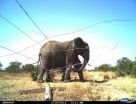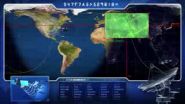(Press-News.org) Cigarette smoking among obese women appears to interfere with their ability to taste fats and sweets, a new study shows. Despite craving high-fat, sugary foods, these women were less likely than others to perceive these tastes, which may drive them to consume more calories.
M. Yanina Pepino, PhD, assistant professor of medicine at Washington University School of Medicine in St. Louis, and Julie Mennella, PhD, a biopsychologist at the Monell Center in Philadelphia, where the research was conducted, studied four groups of women ages 21 to 41: obese smokers, obese nonsmokers, smokers of normal weight and nonsmokers of normal weight. The women tasted several vanilla puddings containing varying amounts of fat and were asked to rate them for sweetness and creaminess, a measure of fat content.
"Compared with the other three groups, smokers who were obese perceived less creaminess and sweetness," Pepino said. "They also derived less pleasure from tasting the puddings."
The findings are published in the April issue of the journal Obesity.
Pepino cautioned that the study only identified associations between smoking and taste rather than definitive reasons why obese smokers were less likely to detect fat and sweetness. But the findings imply that the ability to perceive fat and sweetness — and to derive pleasure from food — is compromised in female smokers who are obese, which could contribute to the consumption of more calories.
"Obese people often crave high-fat foods," she said. "Our findings suggest that having this intense craving but not perceiving fat and sweetness in food may lead these women to eat more. Since smoking and obesity are risk factors for cardiovascular and metabolic diseases, the additional burden of craving more fats and sugars, while not fully tasting them, could be detrimental to health."
AUDIO:
People who smoke tend to eat more high-fat foods. So do obese people. Now investigators, led by a nutrition researcher at Washington University School Of Medicine in St. Louis, are...
Click here for more information.
Interestingly, it was the combination of smoking and obesity that created something of a "double-whammy" because smokers who were not overweight could perceive fat and sweetness that was similar to women who did not smoke.
Previous studies have linked smoking to increased food cravings and greater consumption of fat, regardless of whether a smoker is obese. Studies also have found that smokers tend to have increased waist-to-hip ratios. That is, they tend to be shaped more like apples than pears, another risk factor for heart disease and metabolic problems.
The findings contribute to a growing body of knowledge that challenges the lingering perception that smoking helps a person maintain a healthy weight.
"Women are much more likely than men to take up smoking as an aid to weight control," Pepino said. "But there is no good evidence showing that it helps maintain a healthy weight over the long term. And in the case of obese women who smoke, it appears the smoking may make things even worse than previously thought."
INFORMATION:
This study was funded by a grant from the Pennsylvania Department of Health to the Monell Center.
Pepino MY, Mennella JA, Cigarette smoking and obesity are associated with decreased fat perception in women. Obesity, vol. 22 (4), pp. 1050-1055. April 2014.
Washington University School of Medicine's 2,100 employed and volunteer faculty physicians also are the medical staff of Barnes-Jewish and St. Louis Children's hospitals. The School of Medicine is one of the leading medical research, teaching and patient-care institutions in the nation, currently ranked sixth in the nation by U.S. News & World Report. Through its affiliations with Barnes-Jewish and St. Louis Children's hospitals, the School of Medicine is linked to BJC HealthCare.
Smoking may dull obese women's ability to taste fat and sugar
2014-04-03
ELSE PRESS RELEASES FROM THIS DATE:
Dose-escalated hypofractionated IMRT, conventional IMRT for prostate cancer have like side effects
2014-04-03
Fairfax, Va., April 3, 2014—Dose-escalated intensity modulated radiation therapy (IMRT) with use of a moderate hypofractionation regimen (72 Gy in 2.4 Gy fractions) can safely treat patients with localized prostate cancer with limited grade 2 or 3 late toxicity, according to a study published in the April 1, 2014 edition of the International Journal of Radiation Oncology · Biology · Physics (Red Journal), the official scientific journal of the American Society for Radiation Oncology (ASTRO).
Previous randomized clinical trials have shown that dose-escalated ...
Fences cause 'ecological meltdown'
2014-04-03
NEW YORK (Embargoed – Not for release until 14:00 EST 3 April 2014) Wildlife fences are constructed for a variety of reasons including to prevent the spread of diseases, protect wildlife from poachers, and to help manage small populations of threatened species. Human–wildlife conflict is another common reason for building fences: Wildlife can damage valuable livestock, crops, or infrastructure, some species carry diseases of agricultural concern, and a few threaten human lives. At the same time, people kill wild animals for food, trade, or to defend lives or property, and ...
Quantum photon properties revealed in another particle -- the plasmon
2014-04-03
For years, researchers have been interested in developing quantum computers—the theoretical next generation of technology that will outperform conventional computers. Instead of holding data in bits, the digital units used by computers today, quantum computers store information in units called "qubits." One approach for computing with qubits relies on the creation of two single photons that interfere with one another in a device called a waveguide. Results from a recent applied science study at Caltech support the idea that waveguides coupled with another quantum particle—the ...
NIST launches a new US time standard: NIST-F2 atomic clock
2014-04-03
The U.S. Department of Commerce's National Institute of Standards and Technology (NIST) has officially launched a new atomic clock, called NIST-F2, to serve as a new U.S. civilian time and frequency standard, along with the current NIST-F1 standard.
NIST-F2 would neither gain nor lose one second in about 300 million years, making it about three times as accurate as NIST-F1, which has served as the standard since 1999. Both clocks use a "fountain" of cesium atoms to determine the exact length of a second.
NIST scientists recently reported the first official performance ...
Taming a poison: Saving plants from cyanide with carbon dioxide
2014-04-03
The scientific world is one step closer to understanding how nature uses carbon-capture to tame poisons, thanks to a recent discovery of cyanoformate by researchers at Saint Mary's University (Halifax, Canada) and the University of Jyväskylä (Finland). This simple ion — which is formed when cyanide bonds to carbon dioxide — is a by-product of the fruit-ripening process that has evaded detection for decades.
Chemists have long understood the roles presence of cyanide (CN−) and carbon dioxide (CO2) in fruit ripening, but have always observed them independently. This ...
Hot mantle drives elevation, volcanism along mid-ocean ridges
2014-04-03
PROVIDENCE, R.I. [Brown University] — Scientists have shown that temperature differences deep within Earth's mantle control the elevation and volcanic activity along mid-ocean ridges, the colossal mountain ranges that line the ocean floor. The findings, published April 4 in the journal Science, shed new light on how temperature in the depths of the mantle influences the contours of the Earth's crust.
Mid-ocean ridges form at the boundaries between tectonic plates, circling the globe like seams on a baseball. As the plates move apart, magma from deep within the Earth rises ...
HIV vaccine research must consider various immune responses
2014-04-03
WHAT:Last year, the National Institute of Allergy and Infectious Diseases (NIAID), part of the National Institutes of Health, held a scientific meeting to examine why certain investigational HIV vaccines may have increased susceptibility to HIV infection. In a new perspectives article appearing in the journal Science, HIV research leaders from NIAID (Anthony S. Fauci, M.D., and Carl W. Dieffenbach, Ph.D.) and its grantees at Emory University (Eric Hunter, Ph.D.) and the University of California, San Francisco (Susan Buchbinder, M.D.), summarize the findings and considerations ...
Moving the fence posts
2014-04-03
The use of fenced areas to protect threatened species in the wild should be a last resort, argue scientists from the Zoological Society of London (ZSL) and the Wildlife Conservation Society (WCS).
In an article published in the journal Science, the authors state that there is a need to review the use of fencing as the conservation community develops a clearer understanding of the ecological changes caused when an area is fenced.
Fencing can have a disruptive impact on predator-prey dynamics, with species such as the African wild dog learning to chase prey into fences. ...
Researchers design trees that make it easier to produce paper
2014-04-03
Researchers have genetically engineered trees that will be easier to break down to produce paper and biofuel, a breakthrough that will mean using fewer chemicals, less energy and creating fewer environmental pollutants.
"One of the largest impediments for the pulp and paper industry as well as the emerging biofuel industry is a polymer found in wood known as lignin," says Shawn Mansfield, a professor of Wood Science at the University of British Columbia.
Lignin makes up a substantial portion of the cell wall of most plants and is a processing impediment for pulp, ...
Cassini reports sub-surface ocean on Enceladus
2014-04-03
Enceladus—one of Saturn's smaller satellites—has joined the ranks of Titan and Europa as a moon that appears to have liquid water splashing around inside of it, researchers say. New gravity data from the Cassini spacecraft, which has been exploring the planet's moons for 10 years, reveal that Enceladus harbors an ocean of water beneath 18 to 24 miles (30 to 40 kilometers) of ice at its surface.
A team of Italian and American scientists led by Luciano Iess at Sapienza Università di Roma in Rome, Italy investigated the moon's gravity field and the notable asymmetry it ...



